Political divisions of the United States

| Administrative divisions of the United States |
|---|
| First level |
|
|
| Second level |
|
| Third level |
|
|
| Fourth level |
| Other areas |
|
|
Political divisions (also referred to as administrative divisions) of the United States are the various recognized governing entities that together form the United States. The first-level political (administrative) division of the United States is the state. There are 50 states, which are bound together in a union with each other. Each state holds governmental jurisdiction over a defined geographic territory, and shares its sovereignty with the United States federal government. According to numerous decisions of the United States Supreme Court, the 50 individual states and the United States as a whole are each sovereign jurisdictions.[1]
All state governments are modeled after the federal government and consist of three branches (although the three-branch structure is not Constitutionally required): executive, legislative, and judicial.[2][3] They retain plenary power to make laws covering anything not preempted by the U.S. Constitution, federal statutes, or treaties ratified by the U.S. Senate, and are organized as presidential systems where the governor is both head of government and head of state (even though this too is not required). The various states are then typically subdivided into counties. Louisiana uses the term parish and Alaska uses the term borough for what the Census terms county-equivalents in those states.
Counties and county equivalents may be further subdivided into townships. Towns in New York, Wisconsin and New England are treated as equivalents to townships by the United States Census Bureau. Towns or townships are used as subdivisions of a county in 20 states, mostly in the Northeast and Midwest.[4]
Population centers may be organized into incorporated cities, towns, villages, and other types of municipalities. Municipalities are typically subordinate to a county government, with some exceptions. Certain cities, for example, have consolidated with their county government as consolidated city-counties. In Virginia, cities are completely independent from the county in which they would otherwise be a part. In some states, particularly in New England, towns form the primary unit of local government below the state level, in some cases eliminating the need for county government entirely.
The government of each of the five permanently inhabited U.S. territories is also modeled and organized after the federal government. Each is further subdivided into municipalities. Guam uses the term Village and the U.S. Virgin Islands uses the term Districts, American Samoa uses the terms district and Unorganized atolls.
Other U.S. subnational divisions include the District of Columbia, several minor outlying islands, and Indian reservations, all of which are administered by the Federal government. Each Indian Reservation is subdivided in various ways. For example, the Navajo Nation is subdivided into agencies and Chapter houses. While the Blackfeet Nation is subdivided into Communities. The Federal government also maintains exclusive jurisdiction over military installations and American embassies and consulates located in foreign countries. Other special purpose divisions exist separately from those for general governance, examples of which include conservation districts and Congressional districts.
According to the U.S. Internal Revenue Service,
Federal and state governments are established and recognized by the U.S. Constitution and state constitutions. Federally recognized Indian tribal governments are recognized by the U.S. Constitution, treaties, statutes and court decisions. Other entities may be recognized as governments by state law, court decision, or an examination of facts and circumstances that indicate it has the characteristics of a government, such as powers of taxation, law enforcement and civil authority.[5]
States and their subdivisions
States
The primary political entity of the United States is the state. Four states—Kentucky, Massachusetts, Pennsylvania, and Virginia—call themselves "commonwealths." The word commonwealth in this context refers to the common "wealth", or welfare, of the public.[6] The term has no legal impact.[7]
In 1777 the 13 colonies that had declared independence from Great Britain one year earlier (July 1776) agreed to the formation of a confederation of states, one with an extremely limited central government. A new national frame of government came into force in 1789, when the current U.S. Constitution replaced the Articles. This constitution incorporates the doctrine of the separation of powers, whereby the federal government is divided into three branches, as well as concepts of federalism, describing the rights and responsibilities of state governments and of the states in relationship to the federal government.
On numerous occasions the United States Supreme Court has affirmed that the 50 individual states and the United States as a whole are each sovereign jurisdictions under the Constitution.[8] Due to the shared sovereignty between each state and the federal government, Americans are citizens of both the federal republic and of the state in which they reside.[9] States, however, are not sovereign in the Westphalian sense in international law which says that each State has sovereignty over its territory and domestic affairs, to the exclusion of all external powers, on the principle of non-interference in another State's domestic affairs, and that each State (no matter how large or small) is equal in international law.[10] Additionally, the 50 U.S. states do not possess international legal sovereignty, meaning that they are not recognized by other sovereign States such as, for example, France, Germany or the United Kingdom.[10]
The 50 states of the United States of America are as follows (this list includes both the postal code abbreviation and the traditional abbreviation for each state):
 Alabama (AL; Ala.)
Alabama (AL; Ala.) Alaska (AK; Alaska)
Alaska (AK; Alaska) Arizona (AZ; Ariz.)
Arizona (AZ; Ariz.) Arkansas (AR; Ark.)
Arkansas (AR; Ark.) California (CA; Calif.)
California (CA; Calif.) Colorado (CO; Colo.)
Colorado (CO; Colo.) Connecticut (CT; Conn.)
Connecticut (CT; Conn.) Delaware (DE; Del.)
Delaware (DE; Del.) Florida (FL; Fla.)
Florida (FL; Fla.).svg.png) Georgia (GA; Ga.)
Georgia (GA; Ga.)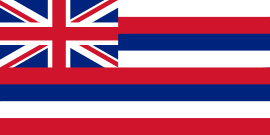 Hawaii (HI; Hawaii)
Hawaii (HI; Hawaii) Idaho (ID; Idaho)
Idaho (ID; Idaho) Illinois (IL; Ill.)
Illinois (IL; Ill.) Indiana (IN; Ind.)
Indiana (IN; Ind.) Iowa (IA; Iowa)
Iowa (IA; Iowa) Kansas (KS; Kans.)
Kansas (KS; Kans.) Kentucky (KY; Ky.)
Kentucky (KY; Ky.)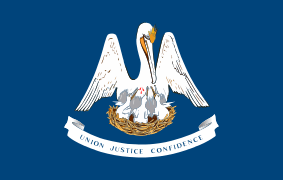 Louisiana (LA; La.)
Louisiana (LA; La.) Maine (ME; Maine)
Maine (ME; Maine) Maryland (MD; Md.)
Maryland (MD; Md.) Massachusetts (MA; Mass.)
Massachusetts (MA; Mass.) Michigan (MI; Mich.)
Michigan (MI; Mich.) Minnesota (MN; Minn.)
Minnesota (MN; Minn.) Mississippi (MS; Miss.)
Mississippi (MS; Miss.) Missouri (MO; Mo.)
Missouri (MO; Mo.) Montana (MT; Mont.)
Montana (MT; Mont.) Nebraska (NE; Neb. or Nebr.)
Nebraska (NE; Neb. or Nebr.) Nevada (NV; Nev.)
Nevada (NV; Nev.) New Hampshire (NH; N.H.)
New Hampshire (NH; N.H.) New Jersey (NJ; N.J.)
New Jersey (NJ; N.J.) New Mexico (NM; N.Mex.)
New Mexico (NM; N.Mex.) New York (NY; N.Y.)
New York (NY; N.Y.) North Carolina (NC; N.C.)
North Carolina (NC; N.C.) North Dakota (ND; N.Dak.)
North Dakota (ND; N.Dak.) Ohio (OH; Ohio)
Ohio (OH; Ohio) Oklahoma (OK; Okla.)
Oklahoma (OK; Okla.) Oregon (OR; Ore. or Oreg.)
Oregon (OR; Ore. or Oreg.) Pennsylvania (PA; Pa. or Penn.)
Pennsylvania (PA; Pa. or Penn.) Rhode Island (RI; R.I.)
Rhode Island (RI; R.I.) South Carolina (SC; S.C.)
South Carolina (SC; S.C.) South Dakota (SD; S.Dak.)
South Dakota (SD; S.Dak.) Tennessee (TN; Tenn.)
Tennessee (TN; Tenn.) Texas (TX; Tex. or Texas)
Texas (TX; Tex. or Texas) Utah (UT; Utah)
Utah (UT; Utah) Vermont (VT; Vt.)
Vermont (VT; Vt.) Virginia (VA; Va.)
Virginia (VA; Va.) Washington (WA; Wash.)
Washington (WA; Wash.) West Virginia (WV; W.Va)
West Virginia (WV; W.Va) Wisconsin (WI; Wis. or Wisc.)
Wisconsin (WI; Wis. or Wisc.) Wyoming (WY; Wyo.)
Wyoming (WY; Wyo.)
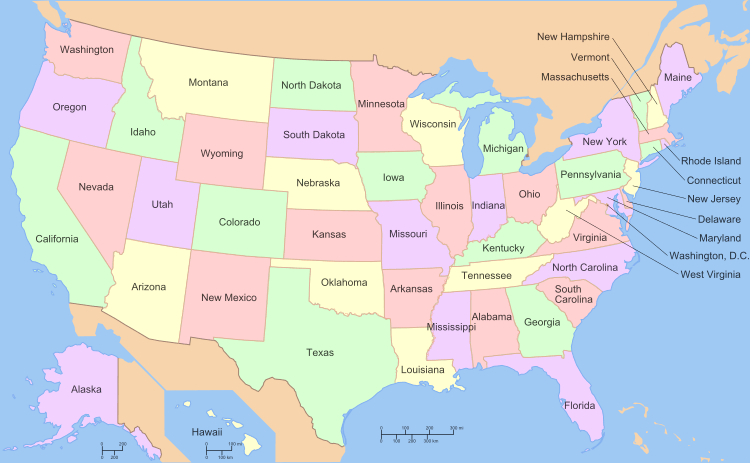
The 50 states can be divided into regions in many different ways.
- The continental United States typically refers to the main block of 48 states and their off-shore islands with the Atlantic Ocean to the east, Pacific Ocean to the west, Canada to the north, and Mexico to the south. Since this grouping contains 48 states, it is also commonly referred to as "the Lower 48". The designation "coterminous" or "contiguous" United States is also used for this grouping of 48 states, arguably more accurately, since Alaska is also located on the North American continent, and therefore "continental United States" should really refer to the Lower 48, plus Alaska.
- Alaska is an exclave of the United States, physically connected only to Canada
- Hawaii is located on an archipelago in the central Pacific Ocean
Counties
The states are divided into smaller administrative regions, called counties in all but two states. The exceptions are Alaska where main subdivisions is the boroughs (parts of the state are not included in any borough, called the Unorganized Borough, is divided into "census areas"), and Louisiana (which is divided into county-equivalents that are called parishes). Counties have varying degrees of political and legal significance. In some states, mainly in New England, they are primarily used as judicial districts. In other states, counties have broad powers in housing, education, transportation and recreation.
Counties may contain a number of cities, towns, villages, or hamlets, or sometimes just a part of a city. Some cities are consolidated with, and coterminous with, their counties, including Philadelphia, Honolulu, San Francisco, Nashville, and Denver—that is to say, these counties consist in their entirety of a single municipality the government of which also operates as the county government. Some counties, such as Arlington County, Virginia, do not have any additional subdivisions. Some states contain independent cities that are not part of any county. New York City is coterminous with five counties.
Towns and townships
Towns and townships are subdivisions of counties in many states. States not having such subdivisions may divide counties into other minor civil divisions. The terms "township" and "town" are closely related (in many historical documents the terms are used interchangeably). However, the powers granted to towns or townships vary considerably from state to state. In New England, towns are a principal form of local government, providing many of the functions of counties in other states. In California, by contrast, the pertinent statutes of the Government Code clarify that "town" is simply another word for "city", especially a general law city as distinct from a charter city. Also, in some states, large areas have no general-purpose local government below the county level.
Some townships or other minor civil divisions have governments and political power; others are simply geographic designations. Townships in many states are generally the product of the Public Land Survey System. For more information, see survey township and civil township.
Municipalities
There are approximately 30,000 incorporated cities in the United States, with varying degrees of self-rule.
Other subdivisions
In Michigan, the state universities are constitutionally autonomous jurisdictions, possessed of a special status somewhat equivalent to that of metropolitan municipality. That is, as bodies corporate, they operate as though they were municipalities, but they have autonomy from legislative and executive control. Each university has a board which is the sole legislative body for the campuses they control. These campuses are independent of all state laws, and under the sole control of the boards. The boards are responsible for all public services, e.g. policing, and fire protection.[11] They often contract with the city they are located in for these services, but all have their own police departments.
Federal oversight of United States territory
Congress of the United States
Article IV, Section 3 of the Constitution for the United States of America defines the extent of the authority that the U.S. Congress exercises over the territory of the United States:
- New States may be admitted by the Congress into this Union; but no new State shall be formed or erected within the Jurisdiction of any other State; nor any State be formed by the Junction of two or more States, or Parts of States, without the Consent of the Legislatures of the States concerned as well as of the Congress.
- The Congress shall have Power to dispose of and make all needful Rules and Regulations respecting the Territory or other Property belonging to the United States; and nothing in this Constitution shall be so construed as to Prejudice any Claims of the United States, or of any particular State.
The power of Congress over territorial divisions that are not part of one of the states is exclusive and universal. Once a territory becomes a state of the Union, the state must consent to any changes pertaining to the jurisdiction of that state. The only potential violation of this occurred when the legislature of Virginia declared the secession of Virginia from the United States at the start of the American Civil War and a newly formed alternative Virginia legislature, recognized by the federal government, consented to have West Virginia secede from Virginia.
United States Department of the Interior
On March 3, 1849, the last day of the 30th Congress, a bill was passed to create the U.S. Department of the Interior to take charge of the internal affairs of United States territory. The Interior Department has a wide range of responsibilities (which include the regulation of territorial governments, the basic responsibilities for public lands, and other various duties).
In contrast to similarly named Departments in other countries, the United States Department of the Interior is not responsible for local government or for civil administration except in the cases of Indian reservations, through the Bureau of Indian Affairs (BIA), and island dependencies, through the Office of Insular Affairs (OIA).
Political divisions administered by the federal government
The United States also holds several other territories, districts, and possessions. As these jurisdictions are not part of one of the various states, sovereignty of them rests solely with Congress, and the they are governed by Congress in accord with its plenary power under Article IV, Section 3, Clause 2 of the U.S. Constitution. This governing power includes extraterritorial jurisdiction in overseas military installations, American embassies and consulates located in foreign countries, and research centers and field camps in Antarctica. Additionally, it exercises concurrent jurisdiction to varying degrees with the states in many domestic federal enclaves.
District of Columbia
A separate federal district, the District of Columbia (DC), which is under the direct authority of Congress, was formed by the District of Columbia Organic Act of 1801 from land ceded to the Federal Government by the states of Maryland and Virginia; however, the territory ceded by Virginia was returned to that state in 1846. The District does not form part of any state and the United States Congress exercises "exclusive jurisdiction in all cases whatsoever", over the city; however, the District of Columbia Home Rule Act provides for limited home rule, including an elected mayor and city council. Residents of the District can vote in presidential elections, as the Twenty-third Amendment to the United States Constitution grants the District three electors in the Electoral College.
Insular areas
The insular areas of the United States are those U.S. territories that are neither a part of one of the 50 states nor the federal district.[12] They are classified by whether they are incorporated (part of the United States proper) and whether they have an organized government through an Organic Act passed by the U.S. Congress.[13] Insular areas are administered by the Department of the Interior's Office of Insular Affairs.
Since the creation in 1787 of the first territory beyond the existing states, the Northwest Territory, the federal government has established numerous organized incorporated territories, with some political autonomy. These jurisdictions (or portions thereof) subsequently became states. Thirty-one of the current 50 states were organized incorporated territories, or part of one, before their admission to the Union. No incorporated organized territories have existed since 1959 when Alaska and Hawaii joinedthe Union.
The current inhabited unincorporated territories of the United States and their ISO 3166-1 codes (in parentheses) are as follows:
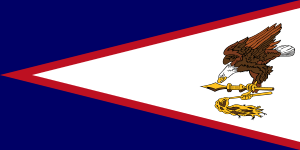 American Samoa (AS) (unorganized; self-governing)
American Samoa (AS) (unorganized; self-governing)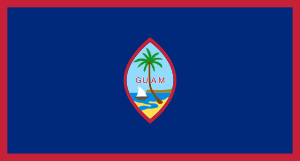 Guam (GU) (organized under Organic Act of 1950)
Guam (GU) (organized under Organic Act of 1950)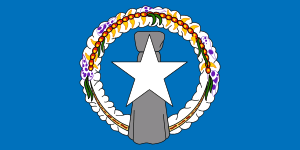 Northern Mariana Islands (MP) (commonwealth, organized under 1977 Covenant)
Northern Mariana Islands (MP) (commonwealth, organized under 1977 Covenant)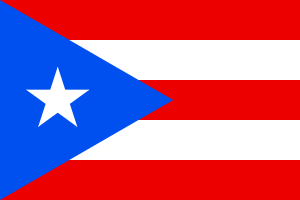 Puerto Rico (PR) (commonwealth, organized under Public Law 600 of 1950)
Puerto Rico (PR) (commonwealth, organized under Public Law 600 of 1950) United States Virgin Islands (VI) (organized under Revised Organic Act of 1954)
United States Virgin Islands (VI) (organized under Revised Organic Act of 1954)
Guam and Puerto Rico, both gained by the United States in the Spanish–American War are each considered part of the "United States" for purposes of law;[14] Providing the term "State" and "United States" definitions on the U.S. Federal Code, Immigration and Nationality Act. 8 U.S.C. § 1101a</ref> on the other hand, the United States Supreme Court declared in a series of opinions known as the Insular Cases that the Constitution extended ex proprio vigore to the territories. However, the Court in these cases also established the doctrine of territorial incorporation. Under the same, the Constitution only applied fully in incorporated territories such as Alaska and Hawaii, whereas it only applied partially in the new unincorporated territories of Puerto Rico, Guam and the Philippines.[15][16]
Since 1959, there has been a single incorporated territory, the uninhabited Palmyra Atoll (formerly part of the Hawaii Territory, but excluded from the Hawaii Admission Act). The following uninhabited territories, along with Palmyra Atoll, all of which are unorganized, form the United States Minor Outlying Islands (UM):
- Baker Island
- Howland Island
- Jarvis Island
- Johnston Atoll
- Kingman Reef
- Midway Atoll (administered as the Midway Atoll National Wildlife Refuge; small number of contractors present)
- Navassa Island (disputed with Haiti)
- Wake Island (small number of contractors present; disputed with Marshall Islands)
The United States government is part of several international disputes over the disposition of certain maritime and insular areas, which it claims as territories. Bajo Nuevo Bank and Serranilla Bank are two such disputed claims.
American Indian reservations
American Indian reservations are areas of land managed by an American Indian tribe under the United States Department of the Interior's Bureau of Indian Affairs. There are about 310 Indian reservations in the United States. Tribes possess limited tribal sovereignty over the land in their reservation. As a result, laws on tribal lands may vary from the surrounding area.[17] The tribal council, not the county or state government, generally has jurisdiction over reservations. Different reservations have different systems of government, which may or may not replicate the forms of government found outside the reservation. Most Indian reservations were established by the federal government; a limited number, mainly in the East, owe their origin to state recognition.[18]
Residents of a reservation may vote as residents of a state and are required to pay federal taxes. The special status of reservations has created both opportunities (such as gambling in states that normally disallow it) and challenges (such as the unwillingness of some companies to do business in an area where they are not certain what laws will apply to them).
Former areas
The two former unincorporated U.S. territories are:
- Panama Canal Zone (1903–1979)
- The Philippine Islands (1898–1946)
Additionally, the United States administered the Trust Territory of the Pacific Islands from July 18, 1947 until October 1, 1994. The trust territory was subsequently divided into four political entities. One, the Northern Mariana Islands, listed above, became an unincorporated U.S. territory, while three—Federated States of Micronesia, Marshall Islands, and Palau—became independent nations. All three have become freely associated with the United States under a Compact of Free Association.
Other defined areas
In addition to general-purpose government entities legislating at the state, county, and city level, special-purpose areas may exist as well. Conservation districts are one such type of special purpose area, created for the purpose of conserving land, natural scenery, flora, and fauna. Congressional districts are another example, formed for the purpose of electing members to the United States Congress.
There are also numerous "special district governments" in existence throughout the various states. According to the U.S. Census Bureau, such governments are:
independent, special-purpose governmental units (other than school district governments) that exist as separate entities with substantial administrative and fiscal independence from general-purpose local governments. Special district governments provide specific services that are not being supplied by existing general-purpose governments. Most perform a single function, but, in some instances, their enabling legislation allows them to provide several, usually related, types of services. The services provided by these districts range from such basic social needs as hospitals and fire protection to the less conspicuous tasks of mosquito abatement and upkeep of cemeteries. The Census Bureau classification of special district governments covers a wide variety of entities, most of which are officially called districts or authorities.[19]
Additionally, U.S. courts have ruled that there are smaller areas which are to be considered as fulfilling government functions, and should therefore be bound by the same restrictions placed on "traditional" local government bodies. These include homeowners associations (determined in Shelley v. Kraemer, Loren v. Sasser, Committee for a Better Twin Rivers v. Twin Rivers Homeowners' Association), and company-owned towns (both for employees and for consumers, decided in the USSC case Marsh v. Alabama in 1946). Many homeowners' and neighborhood associations are considered non-profit organizations, but have the ability to raise taxes or fees, fine members for infractions against association-rules, and initiate lawsuits. The question of civil rights in such communities has not yet been conclusively determined, and varies from state to state.
See also
- Geography of the United States
- Historic regions of the United States
- History of United States continental expansion
- History of United States overseas expansion
- Index of United States-related articles
- List of regions of the United States
- List of U.S. colonial possessions
- List of U.S. state demonyms
- List of U.S. state, district, and territorial insignia
- Organized territory
- Outline of the United States
- Territorial evolution of the United States
- Territories of the United States
- Territories of the United States on stamps
- Unceded territory
- United States territory
- Unorganized territory
- U.S. state
References
- ↑ Radan, 2007, p. 12
- ↑ "State & Local Government". whitehouse.gov. The White House.
- ↑ "Frequently Asked Questions About the Minnesota Legislature". Minnesota State Legislature.
- ↑ 2002 Census of Governments, Individual State Descriptions (PDF)
- ↑ "What are Government Entities and Their Federal Tax Obligations?". Washington, D.C.: Internal Revenue Service. Retrieved May 15, 2017.
- ↑ The American Heritage Dictionary of the English Language, Fourth Edition, 2000.
- ↑ See "Commonwealth", The Columbia Encyclopedia, Sixth Edition, 2001–07.
- ↑ Radan, 2007, p. 12
- ↑ Erler, Edward. "Essays on Amendment XIV: Citizenship". The Heritage Foundation.
- 1 2 Krasner, Professor Stephen D. (2001). Problematic Sovereignty: Contested Rules and Political Possibilities. pp. 6–12. ISBN 9780231121798.
- ↑ Public Sector Consultants Inc. (2003). "MICHIGAN'S HIGHER EDUCATION SYSTEM: A Guide for State Policymakers" (PDF). Ferris State University.
- ↑ Archived April 10, 2010, at the Wayback Machine.
- ↑ "Definitions of Insular Area Political Organizations". U.S. Department of the Interior.
- ↑ See 8 U.S.C. § 1101(a)(36) and 8 U.S.C. § 1101(a)(38) Providing the term "State" and "United States" definitions on the U.S. Federal Code, Immigration and Nationality Act. 8 U.S.C. § 1101a
- ↑ CONSEJO DE SALUD PLAYA DE PONCE v JOHNNY RULLAN, SECRETARY OF HEALTH OF THE COMMONWEALTH OF PUERTO RICO Page 6 and 7 (PDF), The United States District Court for the District of Puerto Rico, retrieved 4 February 2010
- ↑ The Insular Cases: The Establishment of a Regime of Political Apartheid" (2007) Juan R. Torruella (PDF), retrieved 5 February 2010
- ↑ Wade Davies and Richmond L. Clow, American Indian Sovereignty and Law: An Annotated Bibliography (Lanham, MD: Scarecrow Press, 2009).
- ↑ Veronica E. Velarde Tiller, ed., Tiller's Guide to Indian Country: Economic Profiles of American Indian Reservations (Albuquerque: BowArrow Pub., 1996/2005)
- ↑ U.S. Census Bureau (2002). 2002 Census of Governments, Vol 1, Number 1, Government Organization, GC02(1)-1 (PDF) (Report). Washington, D.C.: U.S. Government Printing Office. pp. vii–viii. Retrieved July 5, 2017.
Sources
- Radan, Peter (2007). Creating New States: Theory and Practice of Secession. Ashgate Publishing, Ltd.
External links
- Animated Map: Boundaries of the United States and the Several States
- U.S. Census Bureau Geographic Areas Reference Manual
- CityMayors article
- Atlas of Historical County Boundaries
.svg.png)